 Back to the Be Inspired Blog
Back to the Be Inspired Blog
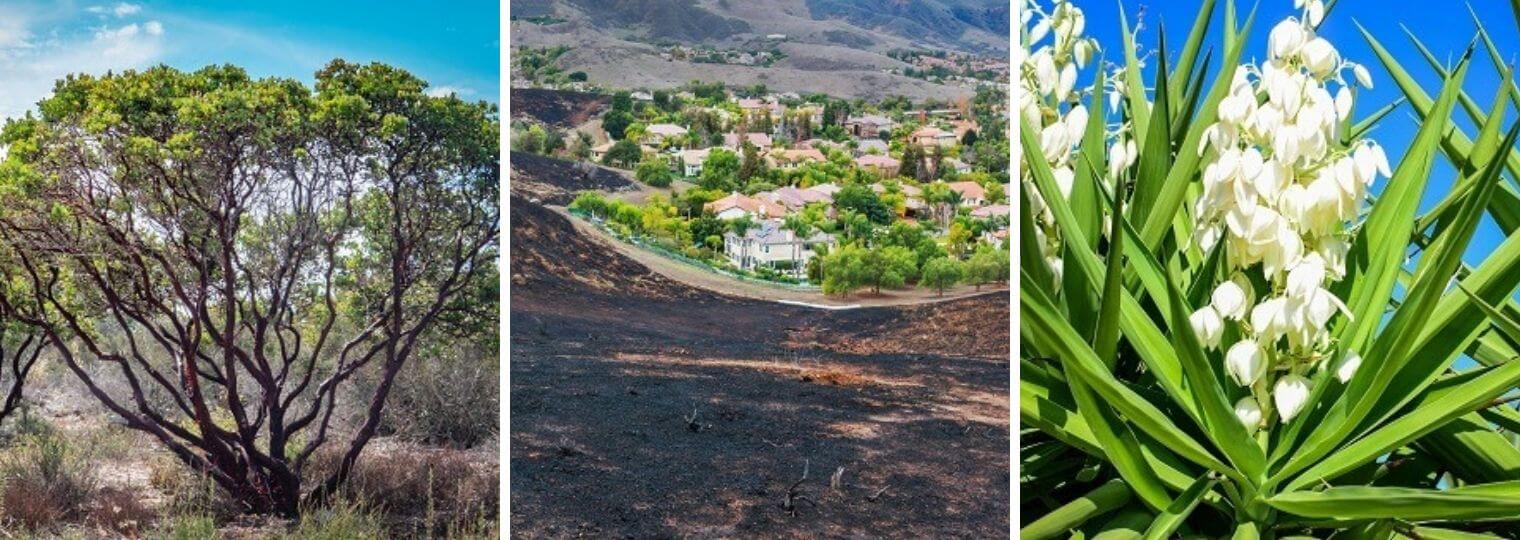
Protect Your Home By Landscaping With Fire Resistant Plants
Fire is an inescapable reality of living in California, and incidents in recent years have been especially brutal. Fortunately, there are easy steps you can incorporate into your landscaping to help ensure your home is as prepared as possible should the unthinkable happen.
Firescaping is the practice of landscaping a yard or garden with fire resistant plants for two purposes:
- Defending your home first from catching fire
- If it does begin to burn, preventing the flames from spreading further
Consider Neighborhood Landscaping For Wildfire Safety
Are youcurrently looking for a home or wondering what to evaluate when it comes to the safety of your current neighborhood? There are five things you should consider according to Douglas Kent, a lecturer on ecological land management at Cal Poly Pomona.
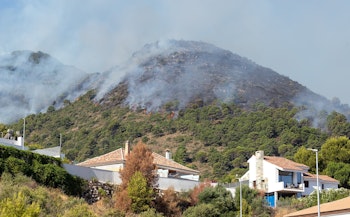
- Can the roads quickly and safely lead emergency personnel to a fire or burning structure? Knocking a fire down quickly is vital to preventing it from spreading and losing control.
- Are the structures in good condition? Exterior walls should be in good condition with eaves and air vents covered and protected, and outside debris stored well away from walls.
- What does the first 30 feet of landscaping surrounding a home look like? Vegetation should be well cared for with all dead, dying and diseased plant material removed.
- What does the landscape look like for 100 feet surrounding the home? Dead material should be removed and flammable weeds removed or cut down, and with ample distance between shrubs and trees to prevent the fire from jumping from one to the next.
- Does the community have an emergency plan in place? Resources should be on hand at all times, including an evacuation plan, backup power and water and emergency communications.
Remember The Zone Theory When Landscaping With Fire Resistant Plants
Steps three and four are two of the most important features of firescaping, and part of a landscape design model developed in the 1960s by the Los Angeles Arboretum called “Zone Theory.” It is so effective that it has been adopted throughout the world.
Zone Theory imagines your home as the bullseye on a giant target, with each of four zones spreading out in concentric rings. The first zone, or Garden Zone, extends 30 feet from the structure and is designed and maintained to withstand an onslaught of embers. The second zone, or Greenbelt, extends 70 feet and its goal is to stop a ground fire. The goals of zones three and four are to reduce the severity of a fire. Zone three extends to 120 feet from a structure and zone four is everything beyond that.
Zone one should be planted with fire-retardant plants which sizzle when exposed to flames and intense heat, but rarely ignite. Examples include lily of the Nile, coral bells and roses. Succulents and cacti are also fire-retardant.
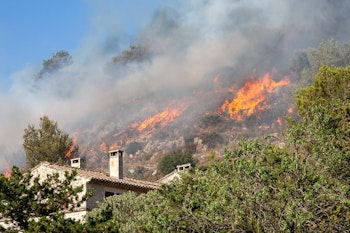
Zones two and three should be planted with fire-resistant plants which may burn, but let the fire pass through quickly and re-sprout without assistance immediately after the fire. These plants are vital for reducing topsoil loss and erosion caused by winter rains following a fire. Fire-resistant plants are more drought adapted and include yarrow, rockrose and island mallow.
In an interview with Fine Gardening, Kent uses the 2003 Cedar Fire in San Diego County as the perfect example of how effective firescaping can be. According to the Las Angeles Times, 2,820 homes were completely destroyed – but of the ones that survived, 90 percent had that vital first 30 feet of defensible space.
Fire Resistant Plants To Use When Landscaping For Wildfire Safety
Here’s a closer look at some of the plants listed above, and a few more recommended by Cassy Aoyagi of Form LA Landscaping.
Buckwheat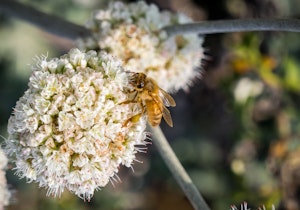
California buckwheat is hardy and easy to grow, preferring well-drained soil in a sunny location. Its flowers are attractive to pollinators and low-growing varieties can be used as a ground cover.
Catalina Cherry
This drought-resistant evergreen can grow up to 40 feet tall, with white flowers in the spring that are popular with pollinators, which produce red fruits in the fall.
Coral Bells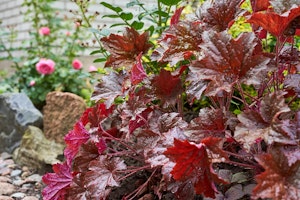
This leafy plant is known for its colorful foliage and drought resistance. It makes a good ground cover at 12-18” tall and produces delicate flowers on tall, thin stalks.
Island Mallow
This ornamental plant is native to California and makes a popular windbreak, growing up to four meters tall with showy red flowers. It does well in clay and sandy soils, making it ideal for preventing erosion.
Lemonade Berry
Also called lemonade sumac, this can be grown as a shrub or small tree. It is often seen covering entire hillsides. The berries are an important source of food for birds and small mammals, while its limbs provide excellent shelter.
Lily of the Nile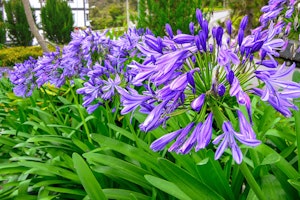
This herbaceous and leafy perennial grows striking clusters of blue and white flowers on stalks that can reach up to four feet high.
Manzanita
Manzanita can grow to 20 feet high and are loved for their shiny red or mahogany-colored bark. The larger varieties will continue growing for a century or more, and produce flowers that attract pollinators.
Oak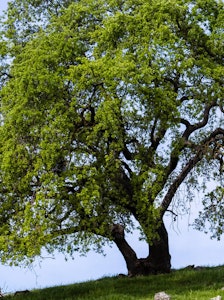
There are over 20 different varieties of oak in California. Oak trees are not only important to fire resistance; if placed strategically, their canopy can help reduce air-conditioning costs significantly.
Rockrose
This compact shrub loves sun and heat, and is tolerant to both drought and poor soil conditions. It’s a perfect accent to rock gardens or other fire breaks you may incorporate into your landscape.
Succulents
Succulents like aloe or cacti have a naturally high water content and will wilt without catching fire. They are ideal for helping reduce damage from wildfires, and can create a natural fire break.
Wooly Blue Curl
This evergreen shrub grows three to four feet high and flowers in tall, purple spikes from May to August. It needs full sun to thrive, but requires no additional water once established.
Yarrow
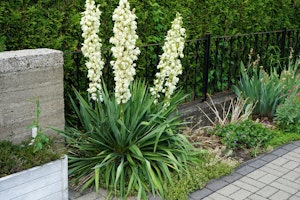
Yarrow is a hardy and versatile perennial, with a showy head of compact white and yellow flowers. It resists drought and is a favorite with bees and butterflies.
Yucca
Yucca is a great fire-resistant plant and one of the first to begin sprouting again in burned areas.
* Plants recommended may vary by location and time of year. Contact your local SummerWinds Nursey for availability or substitution.
Landscaping Tips Immediately Following A Wildfire
If a wildfire does damage to the property surrounding your home, mitigate erosion as soon as possible. Erosion can increase up to 200 percent in urbanized areas following a wildfire, washing enough soil and sediment into the local waterways that entire stream beds have been lifted and pushed off course.
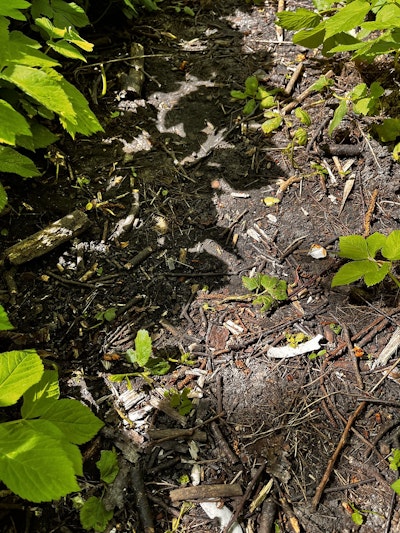
Fire that has wiped out the leaf canopy of trees means there’s nothing to stop winds from whipping through and pushing the soil around. And even wetting the soil itself to attempt to keep it in place becomes nearly impossible – fires will cook the natural waxes found in the soil, coating the top inch with a repellent layer that makes it difficult for water to be absorbed.
Here are the first six things Kent recommends for protecting the soil and preventing erosion immediately following a wildfire.
-
Drain water
Drainage systems will become clogged with debris after a wildfire. The overflow is a leading cause of erosion, even without accompanying fire damage. Roof and street gutters, culverts, swales, detention basins, small streams and concrete waterways all need to be cleared and allowed to flow freely.
-
Divert sheeting water
The changes of losing topsoil increase dramatically if water is allowed to sheet off of nearby flat surfaces like driveways, roadways, sidewalks and parking lots. Normally draining this water into the landscape is standard procedure, but can cause topsoil erosion following a wildfire. Use sand bags or hay bales to divert runoff away from the landscape and into the storm drain system instead.
-
Minimize traffic
Keep foot and equipment traffic off the burnt landscape as much as possible. Especially on a sloped surface, excess activity will weaken the soil’s bonds, dislodging it. Traffic also discourages the growth of new plants, which are vital to preventing erosion. On flat surfaces, traffic will compact the soil and lower its water-absorption potential.
-
Watering
A recently burned landscape absolutely needs water, but there are two distinct phases. The first watering is aimed at breaking the soil’s repellency layer and should be very light – no more than one gallon per 10 square feet, and reaching only the top quarter-inch of soil.
Once the repellency layer is broken, water deeply to a depth of about four inches to encourage surviving seeds, roots and plants to sprout. Water with three to five gallons per 10 square feet and let the top two inches of soil dry out between waterings.
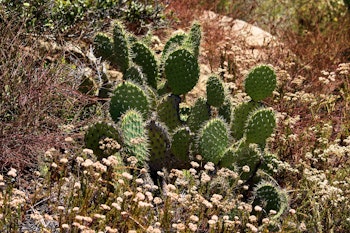
-
Leave the mess
It can be tempting to rake up the burnt remnants of your yard, but the debris left behind is providing much needed protection to the soil below. These charred bits protect the landscape from wind and water erosion and help prevent surviving seeds and plants from drying out. Do not remove debris until a restoration plan has been put in place.
-
Encourage weeds
Any plant that sprouts after a fire should be encouraged. These early returners will reduce the chances of topsoil loss. Weeds and other unwanted plants should not be removed until a restoration plan is in place and ready to be executed.
Find Fire Resistant Plants and Landscaping At SummerWinds
Whether you’re looking for succulents or something with deep roots to protect a hillside and prevent erosion, SummerWinds has what you need. Stop in to any of our South Bay locations and talk with our gardening experts about protecting your home and landscape.

